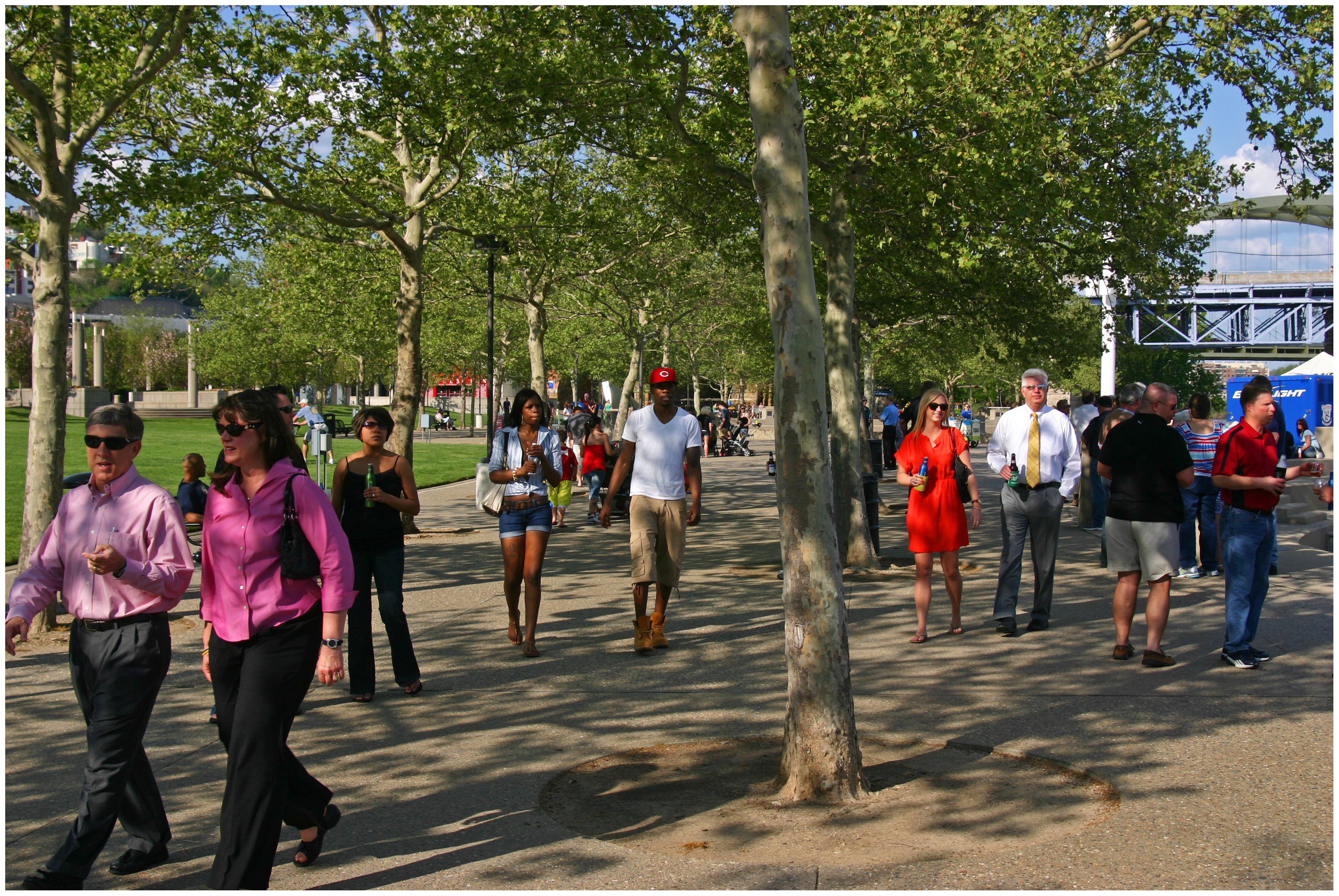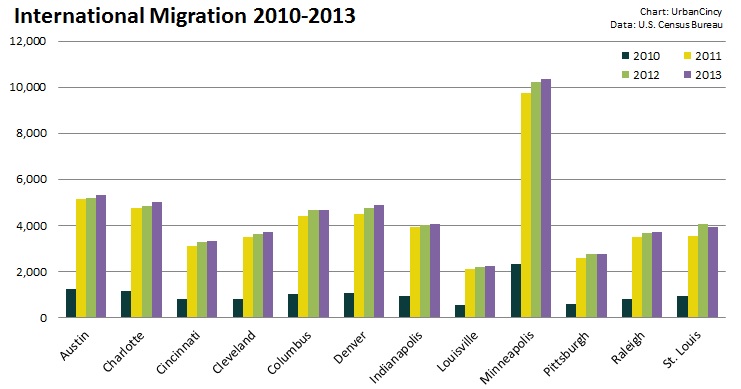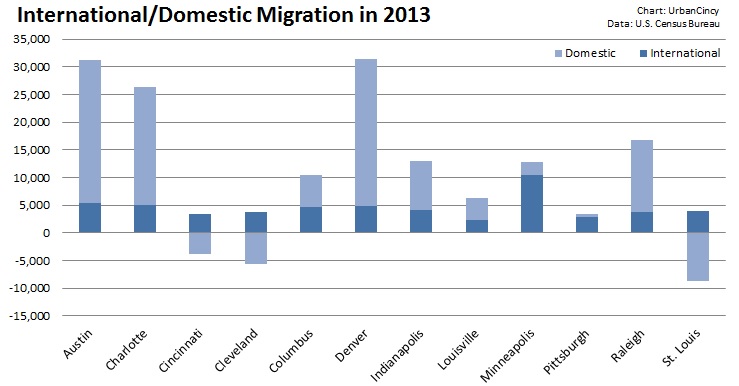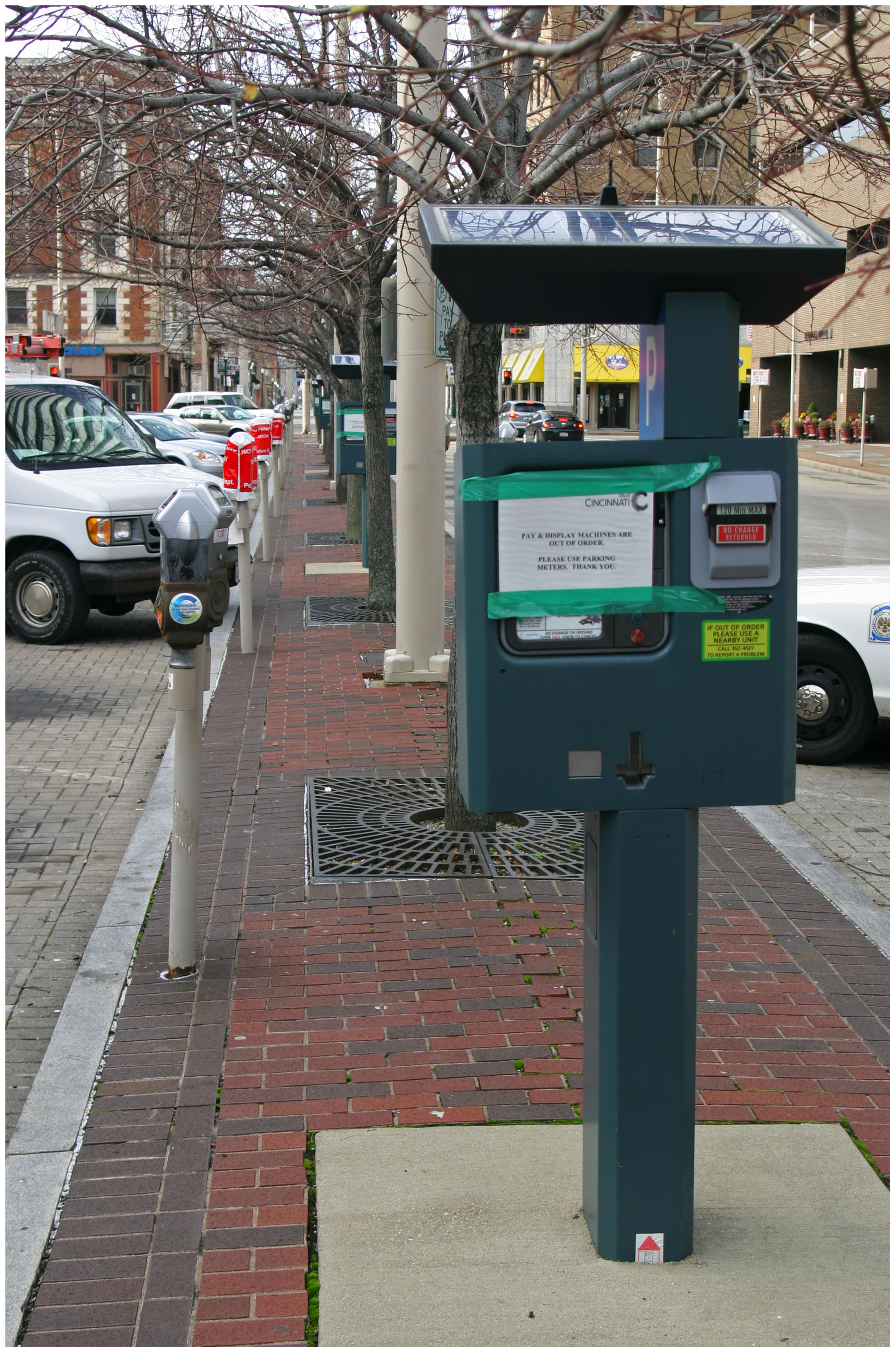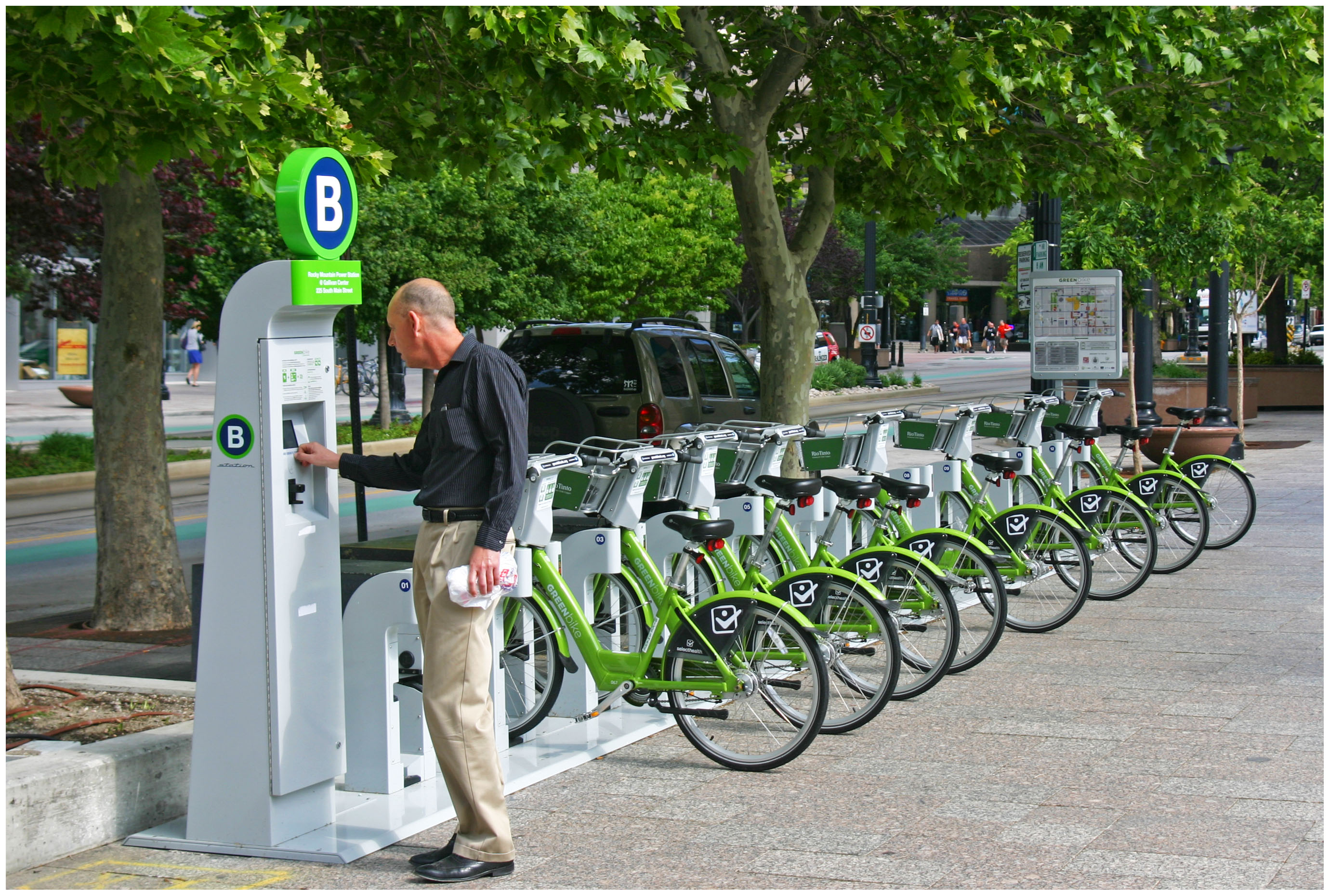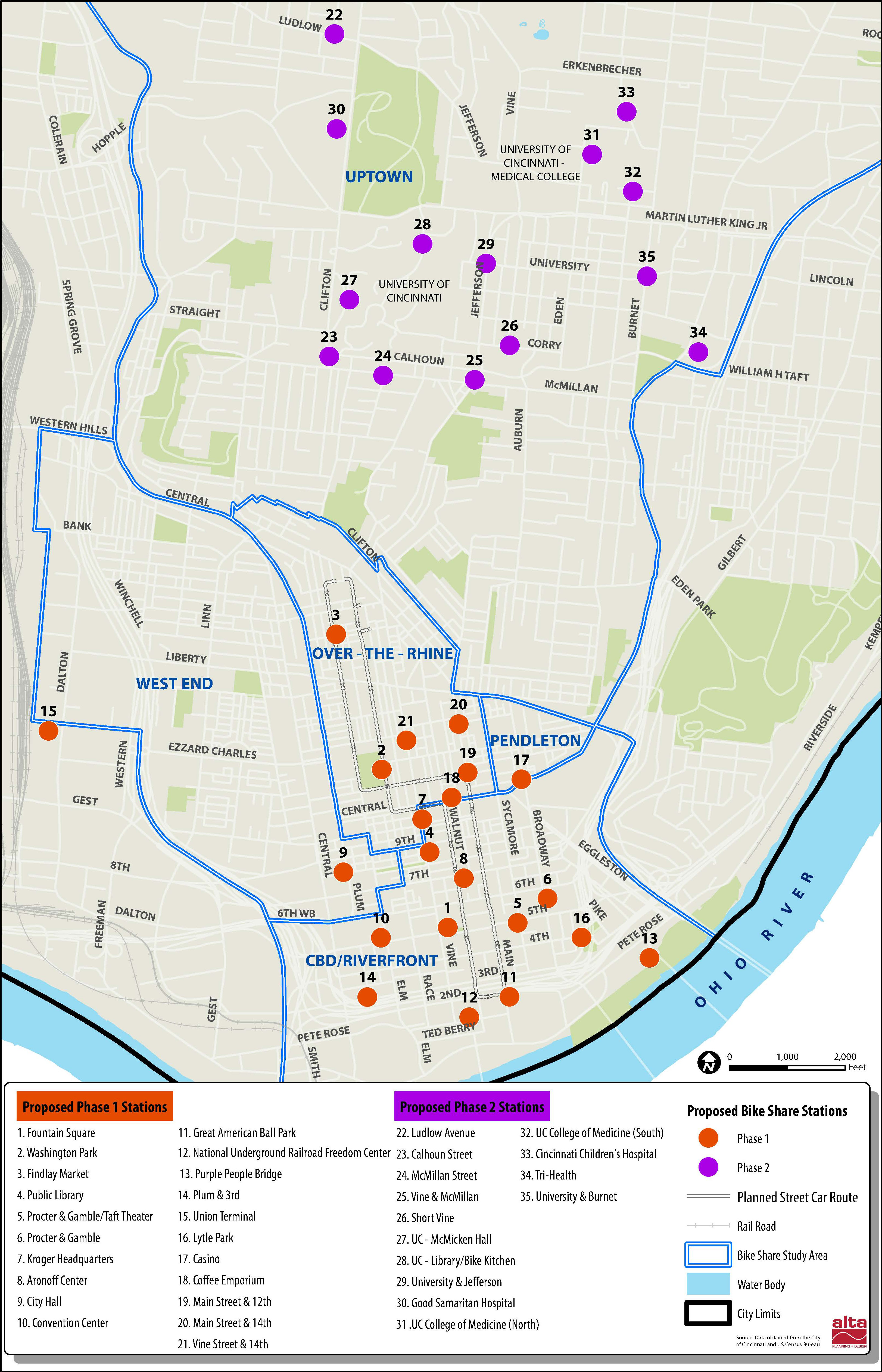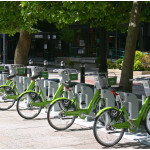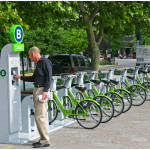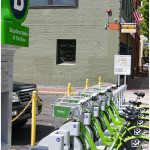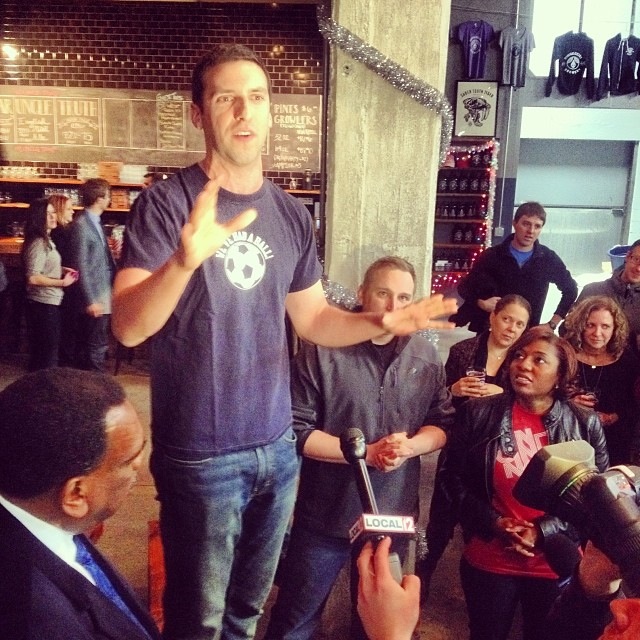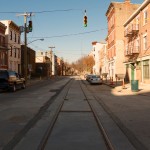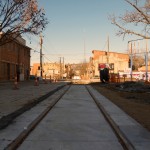Cincinnati has a problem with attracting immigrants.
While it is the largest metropolitan region in Ohio, Cincinnati lags behind both Cleveland and Columbus in attracting foreign migrants. Even as Cleveland continues to lose population and struggles with a weak economy, Cincinnati, with its much stronger economy and national recognition, attracts fewer of America’s newest residents.
More alarmingly, at 4.6%, Cincinnati ranks behind all of its regional competitors (Columbus, Indianapolis, Louisville, Pittsburgh, St. Louis) in percentage of foreign-born population. Columbus (10.5%) and Indianapolis (8.4%) have double or nearly-double the percentage of foreign born population. Cincinnati only bests Pittsburgh and Louisville in terms of attracting immigrants over the past three years.
The United States as a whole continues to attract millions of new immigrants. They’re just not coming to Cincinnati at the same rate as elsewhere.
Mayor John Cranley’s (D) recent announcement to start an initiative to grow the immigrant population in Cincinnati is a welcome one. With statistics showing that immigrants are more likely than non-immigrant Americans to start a business, a flux of foreign residents would be good for Cincinnati’s economy in more than one way.
Cranley is not unique among mayors in cities across the nation that have suffered massive population losses since the 1950s. From Baltimore and Philadelphia, to Detroit and Dayton, cities across the country are now targeting immigrant communities in order to help bolster populations and foster economic growth.
Preferably, Cincinnati’s quest to attract new immigrants will be part of a larger plan to attract new residents, period. While lagging behind in attracting immigrants, the region also continues to shed existing residents to other parts of the country.
Local leaders should authorize a comprehensive study to find out why Cincinnati struggles so greatly with attracting domestic and international migrants. With a growing economy and incredible regional assets, there is no reason why Cincinnati should fail so miserably at attracting new people.
It may prove wise to set city funds aside to create some sort of media blitz that touts the benefits of the city and the surrounding region. With a recent Gallup poll showing that 138 million people around the world would choose to move to the United States if given the opportunity, the market for new immigrants is surely present. Some sort of economic incentive would help as well. Tax breaks for immigrant businesses and incentives to live within city limits will help attract immigrants of all economic levels.
It is not a stretch to imagine that Columbus’ ability to attract and retain so many more immigrants than Cincinnati is due to the presence of Ohio State University, one of the nation’s most prominent public universities. As a result, Cranley should take heed and foster greater cooperation between the City of Cincinnati and the University of Cincinnati and Xavier University, using those nationally-recognized institutions to attract even more newcomers.
At the end of the day, however, immigration is a national issue. For that reason, regional leadership should be in active dialogue with Cincinnati’s Congressional delegation and lobby them to support immigration reform and initiatives that will help attract immigrants not just to the U.S. in general, but to the Cincinnati region specifically.
